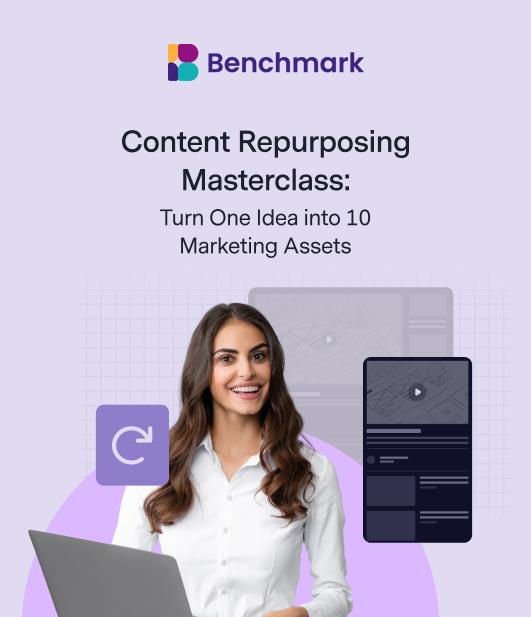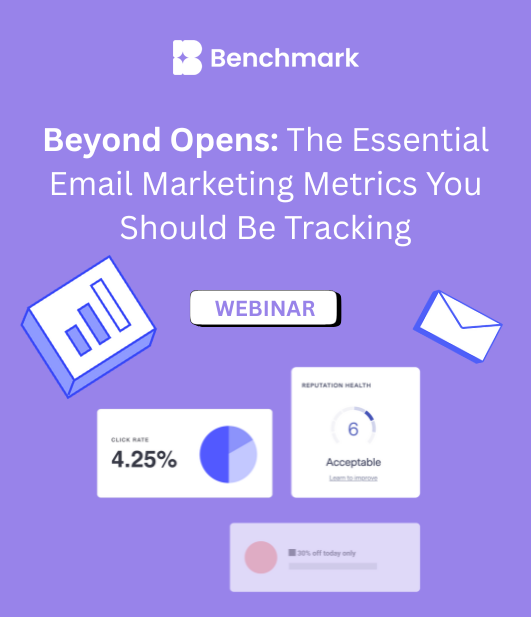Email Marketing Strategies Social Media Marketing
5 Ways to Use Email Marketing and Social Media Integration Techniques for Lead Generation
October 21, 2025 4 min read

This blog post was last updated on 10/21/25.
People often ask, “Should I be doing email marketing or social media marketing?”
The answer is that you should actually be doing both! Your marketing efforts will be the strongest when you use both channels together.
The biggest reason a combination of these two channels is more effective than either is that you will reach more people when you use them both. Your email subscribers are not necessarily your social media followers, and vice versa. So, by using email marketing, you can reach people who don’t follow you on social media, and by using social media marketing, you can reach people who are not on your email list.
However, although you should definitely use email and social media for marketing, email is more important. For every $1 that companies spend on email marketing, they average $38 in revenue. This is significantly higher than the return on ad spend on social media marketing. In fact, people who buy products marketed through email spend 138 % more than those who do not receive email offers, such as people who click on social media ads.
Another reason why email marketing is so valuable is that you will actually own your email list and do not have to pay social media companies to communicate with your subscribers. However, social media is a rented space. You will have to pay social media companies if you would like to advertise on their platforms.
But, how do you bring these two efforts together in the name of lead generation?
How to Use Email Marketing and Social Media Integration to Generate Leads
1. Grow Your Email List Through Social Media Platforms
Social media platforms continue to serve as valuable tools for expanding your email subscriber base. Utilize features such as Instagram Stories, Facebook Lead Ads, and LinkedIn Forms to capture email sign-ups directly. These tools simplify the process for users, increasing the likelihood of conversion. Once leads are captured, nurture them through personalized email campaigns which will help you set a foundation and to increase sales.
HOT TIP: Adding a signup form to your Call To Action button on your social media pages/profiles will help you funnel people from your social media pages to your email list. By doing this, you can use your social media pages to bulk up your email list.
2. Incorporate Social Sharing Buttons in Your Emails
You can add social sharing buttons to your email content. This allows recipients to easily share your emails with their networks, expanding your audience. Platforms like Benchmark Email offer built-in tools to add these buttons seamlessly, facilitating broader content distribution and increased lead generation opportunities.
When you add a social media follow-us button to your scheduled newsletter/thank you page campaign, you can dramatically increase the number of social media followers you gain.
It takes up to seven times to recognize a brand. You can speed up the brand recognition process by ensuring that people from your email list subscribe to and follow you on your social media channels as well.
HOT TIP: When you post content on your social media channels, make sure that it is different from your standard email marketing content. You want your subscribers to feel like they are getting different values on your social media channels than those on your email list. Try to connect differently with different information.

Content Repurposing Masterclass: Turn One Idea into 10 Marketing Assets Webinar
DOWNLOAD NOW3. Utilize Retargeting Ads Based on Email Engagement
Implement retargeting strategies by using email engagement data to inform your social media advertising. For instance, if a subscriber clicks on a specific product link you included in your email but doesn’t purchase it, you can send them relevant ads on social platforms, which will remind them of the product and encourage conversion.
HOT TIP: On the flipside, consider building your campaign around recent tweets/posts that have received higher likes, shares, and retweets. These campaigns will perform the best because they contain content that has already proven to be very interesting to followers and subscribers.

4. Host Webinars and Promote via Both Channels
Webinars are an excellent way to engage leads and showcase your expertise. Promote upcoming webinars through email campaigns and social media posts to maximize attendance. After the event, send follow-up emails with a recording and additional resources, and share highlights on social media to maintain engagement and attract new leads.
HOT TIP: This kind of content is often more effective for email marketing because the average person checks their email 15 times daily. So, it is a guarantee that your email subscribers will see your webinar promo email. However, social media posts tend to be frequently missed since they quickly disappear down newsfeeds and timelines.
5. Monitor Analytics to Optimize Strategies
Use tools like Google Analytics, paired with insights gained from social media and your email marketing analytics. Track things like open and conversion rates to understand your audience’s response and refine your strategies accordingly.
HOT TIP: When optimizing your strategy, consider a 360-degree promotion. The goal is to expose your content on all channels to increase the number of shares and forwards and get maximum clicks and engagement.
Email marketing and social media integration is essential for effective lead generation. By leveraging the strengths of both channels, businesses can enhance engagement, expand their reach, and drive conversions.
Benchmark Recommends
See all articles
How to Segment Your List for Holiday Sales (Without the Headache)
The Rise of ‘Inbox Fatigue’ and How Smart Marketers Are Responding
A powerfully simple email marketing platform
Sign up for free to see how effortless email marketing can be.
Our Company
Compare
Solutions
Compare
Account
© Polaris Software, LLC 粤ICP备14001834号 Benchmark Email® is a registered trademark of Polaris Software, LLC
© Polaris Software, LLC 粤ICP备14001834号
Benchmark Email® is a registered trademark of Polaris Software, LLC



